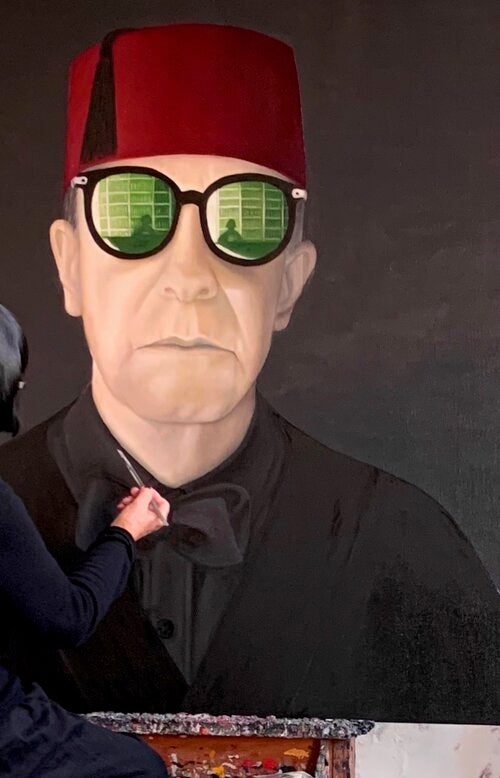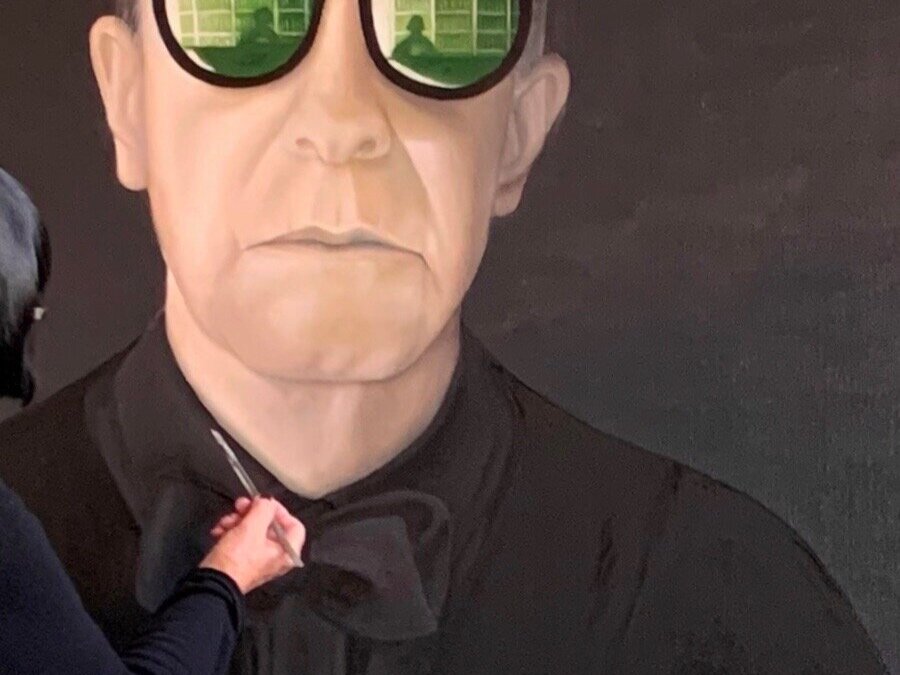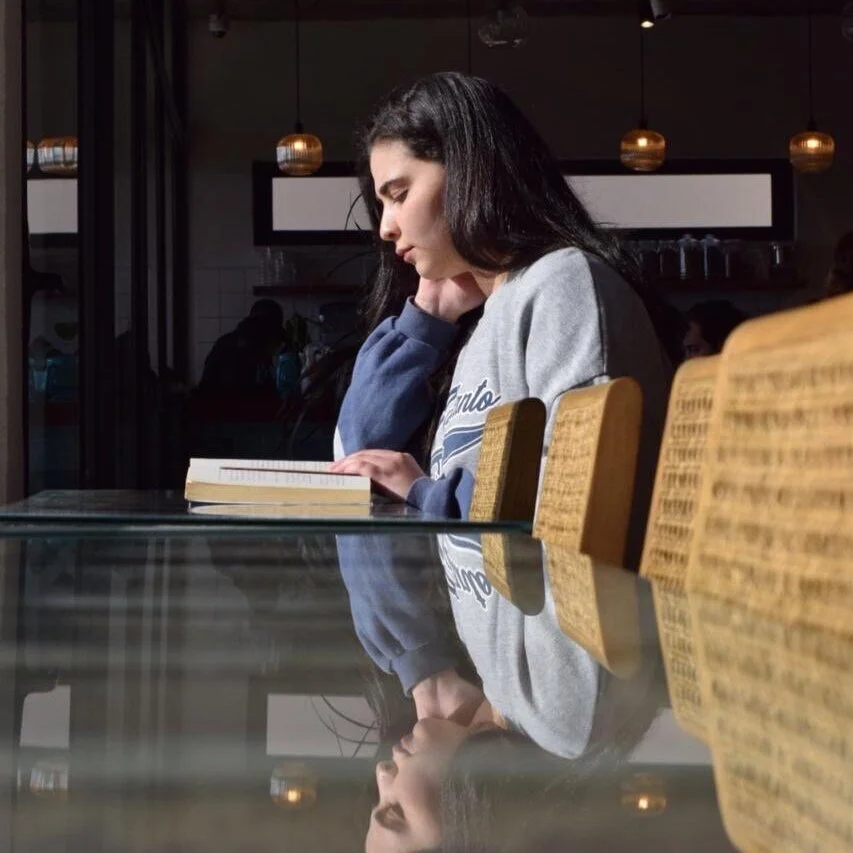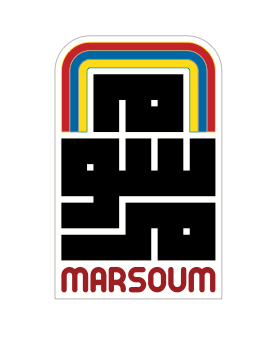
Collector's Handbook: How To Know The Artwork You’re Buying Is Real
Share
Protecting Yourself From Art Forgery
As art collectors, we seek perfection in the art we collect. We look for pieces that add artistic and aesthetic value to our collections and homes. You can only find these characteristics in authentic artwork.
Sellers of authentic art include:
- trusted online and offline galleries
- art marketplaces such as artsy.net
- auction houses, and of course,
- the artists themselves

But the ratio of forgers too is no less. The increasing number of fake art in the market has left many art collector wondering” “ have I ever or will I ever be deceived into buying fake art?”
In this edition of the Collector’s Handbook series, we share a tips that can protect you from buying fake art.
#1: Check The Style
Style is an artist's fingerprints. It's the style that makes their art genuine and unique. By searching an artist's work and knowing what their art looks like, you can protect yourself from buying fake art. This includes analyzing their pattern painting, the art materials, sizes, and formats they use, how they usually display their artwork (mounted or framed). In this phase, the internet is your best friend, try to search for as much work of the artist as you can and compare it to the piece you want to buy.
After becoming familiar with the artist's work and stylistic patterns, analyzing their original signature should be easy. Pay attention to where the artists usually sign and how they sign their work. Some artists sign by using their full name, initials, some add a date or title, and others use specific colours and mediums to sign their work. Artists tend to sign in a way that harmonizes with the art itself. Discordant Signatures that don't blend with artwork or any other pieces by the artist might indicate a problem.
If you are buying your art from an online gallery or an art auction house, specifically ask for a clear and evident copy of the signature that shows all the details. If the seller provided you with a poor quality or glare photo, it's probably because they are selling you fake art.
#2: Confirm Provenance
When we are talking about authenticity, we are talking about value, and one of the biggest drivers of value in the art collecting world is provenance. Provenance is a documented history of ownership of an artwork. It shows details that are related to the artist who created the piece, galleries and auction houses that have sold it or which the artwork has been held in.
Imagine you are buying a piece that passed through the hands of public and historical figures, or a prestigious gallery, now imagine the value of this artwork. Pieces that have a long documented chain of ownership are more likely to be authentic and valuable. With that being said, if you are about to buy art and you want to make sure it’s a genuine print, the first thing you need to ask for is the artwork provenance; All work purchased through Marsoum Art Collective will have a confirmed provenance.
However, creating a perfect fake provenance document isn’t that hard on falsifiers. To make sure that the document offered by the online gallery or auction house is legitimate, pay attention to the following details:
- A detailed description of the artwork. Provenance documents must include information that explicitly describes the piece, such as the type of work, materials used, and dimensions. It also includes the title, artist name, and date of creation. Provenance documents that don't include these details are highly questionable, and they are not considered authentication.
- An original document. PDFs and Photocopies can’t be considered as legitimate provenance documents. Original copies with inked signature or hand-stamp are your best option.
- Identifiable Signatures. A definite and verified signature or stamp is crucial to trace the identity and authenticity of the certifying authority. The signature of provenance documents also includes contact information and qualification of the expert or the authority.
- A verifiable ownership history. A detailed list of previous owners is a good indicator that the artwork is genuine. Most of the artwork will have the name of the owner and the year the owner had the artwork in possession. With this information, you can contact the previous owners directly and ask them about the art piece you are about to buy.
Provenance documents come in many forms. A signed certificate of authenticity from the artist or the gallery that represents the artist is ideal, an original invoice or receipt from a qualified authority or directly from the artist, or an appraisal from an expert in a particular artist or area are also good choices.
#3: Conduct A Scientific Analysis
No matter how well painted or how detailed the provenance was, if the artwork wasn't investigated or examined by using scientific techniques, the authenticity of that artwork is always going to be debatable. Art scientists use non-destructive methods that consist of examining a sample, or the surface and what can be considered as invisible in the artwork. The most commonly used techniques are:
1- Infrared Feflectography
Before the actual painting process, artists usually draw a plan or a sketch of the artwork by using paint, pencils, and other materials, this process is known as underdrawing. This preparation method helps guide the form of the artwork. Through the help of infrared reflectography art, scientists can see what’s beneath the surface of a painting, and examine the underdrawing sketch.
This method uses infrared light that passes through the layers of pigment until it reaches the underdrawing below. The infrared light reflects back on a special camera which generates an image of what the sketch looks like. The scientist investigates whether the underdrawing matches the artist preparation method. If it doesn’t, then the artwork is likely a fake.
2- X-ray
An experienced forger will know that you can’t forge an old painting on a brand new canvas. A simple look with a magnifying glass is enough to tell you that this art is not even close to being old. Therefore forgers tend to paint over a less valuable art piece to create a valuable fake. X-Ray technology helps art investigators determine if the artwork was painted on a re-used canvas and verify the exact age of each painting layer. Also, if the artist is known for painting on new canvases, the presence of any previous pigments beneath it indicates it’s a fake painting.
3- Mass Spectrometry
This technique is used to identify the pigments that were used in creating the painting. Mass Spectrometry measures the mass-to-charge ratio of a pigment sample mass of molecules. The art scientists display the results in a chart known as a spectrum and then compare the masses present in the sample to the known masses of particular elements.
This method mainly detects if the pigments were created when the piece being tested was supposedly made or not. For example, if Mass Spectrometry shows that a supposedly 16th-century painting consists of pigments that weren’t created until the 20th century, then the piece is fake.
#5: Conduct A Visual analysis
A visual inspection is another way to detect fakes or reproductions. By thoroughly examining the front, back, and sides of the artwork, you might notice suspicious details that could indicate that the art piece is a fake. The following are some tips to consider when you are visually examining an artwork.
1- Texture
You can easily distinguish the texture of an oil or acrylic painting from prints. Paintings have a depth of paint layers. Once you move your hand across the painting, you should feel the paint waves or bumpy painting strokes, induced by the artists' palette knife or brush strokes. On the other hand, reproductions have a flat and smooth surface.
2- Magnifying glass
For centuries the magnifying glass has been the imperative tool of detecting art forgery. Throughout the help of the magnifying glass or a jeweller’s loupe, you can get a detailed look at the paint layers on the artwork, and identify any paint that was added recently. For example, a forged painting will have paint from a signature that sank through the cracks of the original surface paint beneath it, which shows that the signature was added to a surface that has dried and cracked a long time ago.
You can also use the magnifying glass to spot digital reproductions. If the image consists of perfectly arranged halftone dots, then you can be sure that the art piece is fake.
3- The painting’s back
The back of a painting can tell a lot about its authenticity. By looking at the back, you can analyze the materials used to create the artwork. Start by examining the stretcher bars. Most paintings retain their original stretchers. If you notice a supposedly old art mounted on new stretcher bars, then there is a good chance that the painting is not as old and original as you think. Yet, legitimate restorers use new stretcher bars if the old ones can no longer hold an old or weak canvas.
Forgers have a lot of techniques to make a painting look older. They spray the stretcher bars with stains to make the wood look older, use yellow-toned varnishes, and add some old looking stickers to the back of the painting. So be cautious when you are examining the back of the art because no matter how old and genuine it looks, you always need to analyze it carefully and up-close.
Did you know that we provide certificates of authenticity upon request? We try to keep things green, so we don’t include these by default. If you’d like one, please let us know by reaching out at ishi@marsoum.co
You can always change your mind later!

Written by: Zaina Abuhammour
Zaina is a freelance copywriter and a lifelong learner. Two of her great passions in life are writing and storytelling.
Through her work, she seeks to tell stories that captivate and inspire people. When she isn’t busy freelance writing, you can find her somewhere toiling away at her own fiction writing.
